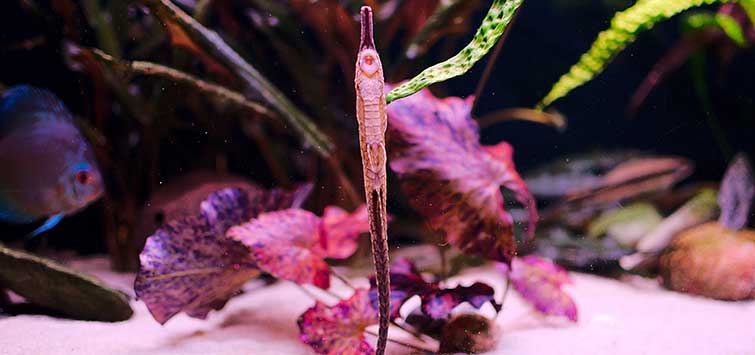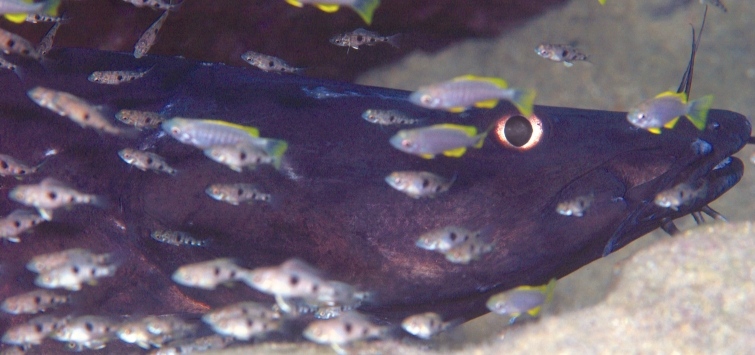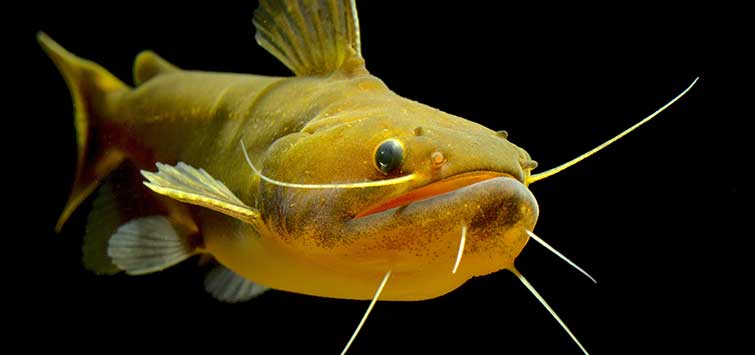The Strange Beauty of Fancy Goldfish Varieties
Mark Denaro
They say that beauty is in the eye of the beholder, and this holds especially true in the case of fancy goldfish, in its multitude of shapes and forms.
My fascination with goldfish expanded dramatically when the April 1973 edition of National Geographic arrived at our house. The cover featured a red-and-white bubble eye, and the accompanying article showcased many goldfish varieties through detailed photos and descriptions. One image, a photo of a magnificent, large ryukin, captivated me, and it has remained my favorite variety ever since. I did not see a live ryukin for several years after that first glimpse, but when I finally did, it lived up to every expectation.
Beauty is subjective, and unless you’re interested in entering your fish in a fish show, you should buy whatever goldfish you like. For show-quality fish, however, all the varieties we have discussed here have standards and qualities that breeders strive for. These include a smoothly curved back, free from bumps or points. Varieties having a double caudal (tail) fin must have double anal fins situated beneath the base of the tail, and these fins must be fully split without any fusing. But, again, these characteristics are only important when evaluating the quality of a fish for a show.
Let’s begin our discussion with those goldfish varieties that are most similar in body shape to the traditional comet.
Without question, our starting point for the fancy goldfish aquarium is the wakin, a comet with a double tail. Although one might expect these to be available in every color, they have traditionally been limited to red or red and white. In the last few years, calico wakins have begun to appear in the trade, but they remain uncommon and have never reached the popularity of their shorter-bodied cousins.
Orandas
The oranda is perhaps the most popular fancy goldfish, known for its shortened body and the prominent head growth called a wen. Typically, new growth on the wen is white, gaining pigment gradually until it matches the rest of the head.
Many new hobbyists mistakenly view the wen as a sign of illness and may medicate their fish unnecessarily, so understanding its natural development is crucial. The body shape of orandas varies with the quality of the fish and its breeding origins. Cultural preferences influence these differences: Thai orandas tend to have rounder, deeper bodies than those bred in China or Israel.
Throughout my years in the hobby, red cap orandas—white-bodied fish with a striking red wen—were highly popular. Although their popularity has waned somewhat over the past quarter-century, they remain attractive in water gardens and when viewed from above. Today, calico, red, and red-and-white orandas are more common.
While red and black varieties are popular in smaller sizes, the black typically fades with age, making larger black specimens rare. Solid black fish are in demand when the color is rich and velvety, whereas duller shades are less desirable. Additionally, head growth varies by color strain—blues and chocolates tend to have less-pronounced wens, while red caps, reds, red-and-whites, and calicos often develop larger ones.
Breeding practices also influence head growth, with Thai orandas typically exhibiting smaller wens than those from China or Israel. Panda orandas, featuring a mix of black, white, and red or orange, first appeared 20 to 30 years ago. Initially, they showed minimal head growth, but over time, as breeders prioritized color, more-pronounced wens became common. Unfortunately, those with the largest head growth often lose the sharp color delineation that made early panda orandas so sought after.
Enjoying TFH Magazine? Subscribe Today!
Lionheads and Ranchus
The next two varieties are similar and are often mistaken for each other—the lionhead and the ranchu. Lionheads, originally bred in China, have longer bodies compared to the ranchu, which were developed in Japan. Ranchu feature a shorter, egg-shaped body with a distinctly curved back, an important quality indicator that affects the angle and length of the caudal fin. Typically, the ranchu’s caudal fin is lower and shorter than that of the lionhead.
Both varieties develop a wen, which in some strains appears only above the eyes and in others extends along the sides of the head. In extreme cases, the wen can become so large that it interferes with the fish’s vision and may require trimming. Both lionheads and ranchu are available in a wide variety of colors.
Ryukins
Ryukins are essentially a fantail with a shortened, deep body, along with twin tails and anal fins. Their body shape, reminiscent of an egg standing upright in an egg carton, is a defining feature. In high-quality specimens, the body is taller than it is long, with a true red-and-white coloration preferred over orange and white.
In the early to mid-1980s, several high-quality ryukins were imported from Japan, and those specimens remain some of my personal favorites. Today, ryukins are more commonly bred in China, Thailand, or Israel. They are available in both long- and short-finned varieties, and when selecting young ryukins, it is advisable to choose those with the deepest bodies and highest backs, as these characteristics will mature into their signature form.
Celestials
Next is one of the most unusual varieties, the celestial. Celestials feature a relatively long body, a double tail, and no dorsal fin. Supposedly developed from the telescope-eyed goldfish seen in many local shops, they trace their origins back to Chinese monastery monks in the 1700s.
During their first year, their eyes bulge outward and eventually turn upward, giving the appearance that they are gazing toward the heavens, giving us the origin of their name (at least allegedly—I’ve been keeping goldfish a long time, but not since the 1700s, so I can’t say for sure!).
Despite their uniquely upturned eyes, they navigate their environment and find food without problem, although not as quickly as fish with standard vision. Because of their altered field of view, celestials should not be housed with more aggressive feeders. They are best appreciated in a water garden—indoor or outdoor, depending on your climate—where they can be viewed from above. Celestials are most commonly available in calico patterns, though red and red-and-white forms also exist.
Bubble Eyes
Even more bizarre is the bubble eye goldfish. With a body structure similar to the celestial, bubble eyes develop a fluid-filled sac beneath each eye that jiggles as they move. Like celestials, their eyes eventually point upward. These bubbles may affect the fish’s vision, and it is for this reason that some aquarists oppose the variety.
I have not kept bubble eyes personally, but I appreciate their distinctiveness. When selecting them, look for specimens with bubbles of equal size and shape; ideally, they should be perfectly globe-shaped, since uneven bubbles are considered a fault by judging standards.
This variety also does best when kept separately, as other fish with normal vision will outcompete them at feeding time. Special care should be taken when decorating their fancy goldfish aquarium, as well. Avoid décor with squared edges or sharp points, including driftwood, that could snag or puncture the delicate bubbles. These fish are available in a wider array of color patterns, with black bubble eyes being particularly popular, along with traditional calico, red, and red-and-white forms.
Pearlscales
Pearlscales represent another unusual type. With most fish, scales that begin to stand away from the body indicate dropsy, a condition in which internal organs fail and the body cavity fills with fluid. In pearlscales, however, this appearance is deliberate. They often resemble a goldfish that has swallowed a golf ball, although larger specimens may be closer in size to a baseball.
These fish are available in varieties with or without head growth; those with head growth are commonly referred to as crowned pearlscales. Most are available as calicos, reds, or red-and-whites, though additional colors are beginning to appear on the market. As with oranda head growth, it is important not to mistake the natural development of pearlscales for disease and to avoid unnecessary medication.
A Captivating Diversity
Fancy goldfish come in a wide range of shapes and colors, with a type to suit every taste. Open yourself to the possibility of keeping these uniquely shaped creatures, and you may find yourself as captivated by them as I have been.
They are more intelligent and possess longer memories than many expect, and they adapt well to both (midsize to large) indoor aquariums and outdoor water gardens. Many other varieties exist beyond what we’ve mentioned here, and I encourage you to explore further and choose your favorite.

.png?h=595&iar=0&w=2781&hash=5FD5E69473BCC22199FBFA2FB71B6033)



